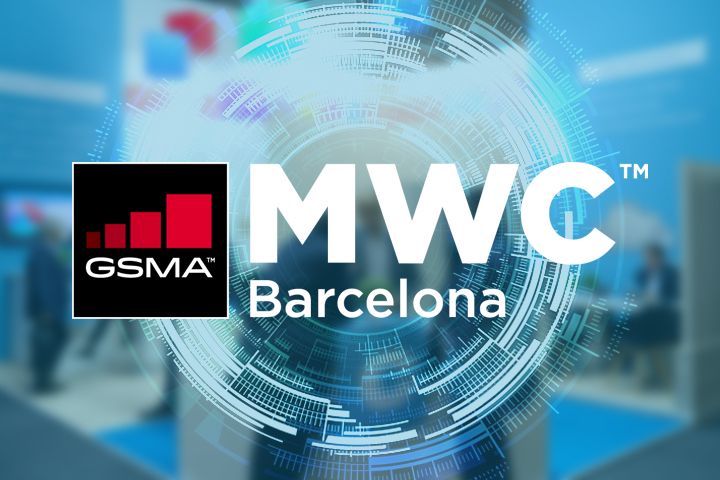MWC22: a perverse traverse through the Metaverse

Brian Coombs reports back from this year’s MWC Barcelona, detailing the highs and lows from the showfloor – from the usual bricolage of 5G services and connected devices, to folding mobile phones, cyber-dogs, and the Metaverse causing more than a few eyes to roll.
We’re back! After a two-year hiatus Cerillion was back at MWC in Barcelona – back manning the stand, back meeting our customers face to face, back in the Tapas Bar, and I was back to trawling the halls looking for the next big thing, the next exciting thing, or maybe just the next random thing.
Before the show a lot of the talk was about who was or wasn’t going to be there – was it going to be full of empty spaces and a load of suppliers trying to sell to each other? Or would the operators and punters come back?
The good news is that it was a busy show. Sure, numbers were probably only 60,000 as opposed to the 110,000 that were coming through the doors pre-COVID, and yes, it was definitely smaller with “only” 7 halls and more space at the back of those, compared with the 10 packed halls across two sites of previous years, but with the exception of the first morning it never felt quiet.
So, what did I find? Well 3 years ago 5G was still the next big thing with lots of promise and so everyone was talking about what you would be able to do with it. Today, of course, 5G has already been launched in a lot of markets, and so it is mostly old news for a forward-looking show like MWC.
The exception was a few of the operators demonstrating their now-live 5G networks; for example, Orange had a demo where you could use a phone to remote control a racing car back in their labs in Paris, whilst Telefonica had their 5G barman that ironically was incredibly slow at making drinks. 6G made a couple of minor appearances, but it’s far too early for anyone to take that seriously outside of the R&D labs, so there was a feeling of an industry looking for something to get people excited about.
Luckily for us, Mr Zuckerberg has given everyone the perfect thing. I should have seen it coming really, but the metaverse was everywhere. Whether it was SK Telecom and their “4D Metaverse” – an arcade ride combined with a VR (Virtual Reality) headset; Accenture inviting you to “Enter the metaverse” – to do what, I don’t know, but it involved VR and throwing around some huge numbers about how much the metaverse was worth; or HTC Vive and the Viverse, also apparently just VR. Then there was the Travel Metaverse Service, and your guess is as good as mine on that one!
So, it seems that taking something you’ve been doing for years and putting -verse on the end is the way forward. I’ll let you know as soon as I find out what it is actually about, but at the moment it looks like just a rebranding of VR.
The other noticeable addition this year was around sustainability; most of the big stands had an area talking about how they were making themselves green, while Vodafone and Nokia dedicated almost their whole stand designs to it. It was good to see companies starting to take it seriously, although it still seems at odds with tens of thousands of people flying around the world to attend a show like this.
In terms of phones, last time I was there it was the launch of the Galaxy Fold, at the time behind a double glass box with security guards, which as we soon found out was to stop anyone bending it as it broke rather easily. So I thought I’d take a tour to find out the state of the folding phones today.
Samsung are now onto their third generation of folding devices and this time they were out to play with. With two models on offer, they certainly seem to be solid devices and with no sign of dodgy hinges or gaps behind the screen: the Fold, a normal size phone that opens to a square, and the Flip, a half size phone that unfolds to a normal smartphone shape which I think will find a market. However, when open, both devices had a very visible line where the hinge was, and I felt they were quite slow to switch the screen between form factors.
Huawei had their P50 Pocket, but when open the hinge was very obvious to the touch, but strangely not to the eye, so that felt a bit odd. Similarly, the Honor Magic V had a very visible fold in its square factor. But the clear winner for me was the Oppo Find N – hidden at the back of their stand this was a beautiful device with no fold visible when open into a square, it was also far quicker than the others to switch between screens. The only downside was it felt a bit thicker than the rest, but this would certainly be my choice if looking for a folding phone.
Other than that, there was the usual random array of mismatched devices – why Oral-B, yes the toothbrush people, have a large stand at MWC I don’t know. Car companies weren’t quite as ubiquitous as previous years, but there were still a few showing off how much telemetry they now collect and transmit. And Xiaomi showed off a few mm thick transparent TV, cleverly still only letting you see the image on one side. But the show winner in terms of gadgets was IBM who brought along Spot, the Boston Dynamics robot dog, or the “intelligent roaming edge device” as they have taken to calling it. It is hypnotic to see how well it moves up close; if you haven’t seen it before it’s well worth checking out on YouTube.
But the show winner in terms of gadgets was IBM who brought along Spot, the Boston Dynamics robot dog, or the “intelligent roaming edge device” as they have taken to calling it. It is hypnotic to see how well it moves up close; if you haven’t seen it before it’s well worth checking out on YouTube.
Overall, I think MWC has proved that it’s survived the pandemic and won’t be disappearing anytime soon. Whether it regrows to its previous size or stays as this slightly more focused, more manageable, show remains to be seen. I’ll let you know next year.

